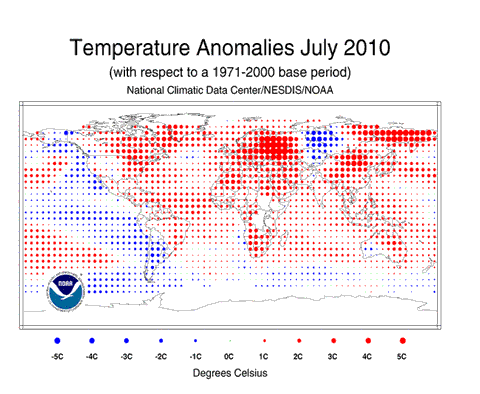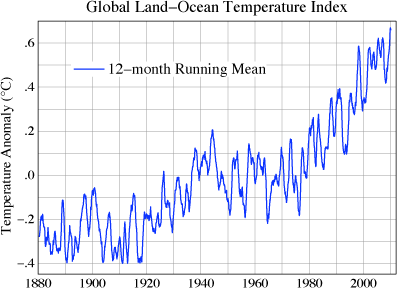 James Hansen has reported on his recent visit to Norway to receive the Sophie Prize. Hope springs eternal, he comments, and in spite of his disappointments with other world leaders, even those purported to be of the “greenest” variety, he wrote a letter to the Prime Minister of Norway prior to his visit.
James Hansen has reported on his recent visit to Norway to receive the Sophie Prize. Hope springs eternal, he comments, and in spite of his disappointments with other world leaders, even those purported to be of the “greenest” variety, he wrote a letter to the Prime Minister of Norway prior to his visit.
“As you know, I am fond of Norway, and have great respect for your country and its citizens, as well as for your personal ambitions to protect global climate. Your recent rainforest initiative is a splendid example of leadership the world desperately needs. And your commitment at the Copenhagen climate talks to reduce Norway’s emissions 40 per cent by 2020 was exemplary.
“However, and especially in light of that, I am disappointed to learn that Statoil, Norway’s state-owned oil company, has taken such backward strides through its strategic decision to invest in Canada’s destructive tar sands industry. As the most energy-intensive source of oil, this project represents the worst of what humans are doing to the planet in a quest to prolong our global addiction to fossil fuels.
“It is still feasible to stabilize the climate, but only if we leave the tar sands in the ground. The massive greenhouse gas amounts from the tar sands surely would cause the climate system to pass tipping points, while also trampling on the human rights of Canada’s First Nation communities and greatly damaging the Canadian boreal forest.”
He went on to urge that the government, which owns two thirds of the shares of Statoil, support a resolution at the AGM that Statoil pull out of the tar sands engagement.
His reply came from the Deputy Minister of Petroleum and Energy, and after opening pleasantries got down to business:
“As you now know from the results of the Statoil Annual General Meeting, we see Statoil’s oils sands investment as a commercial decision which is within the Statoil board’s area of responsibility. We are of the opinion that such decisions should not be overturned by the AGM. It is our opinion that this is in line with good corporate governance, a view that is also shared by a vast majority in the Norwegian Parliament. I can however assure you that we will continue our offensive stance on climate change issues both at home and abroad, and we look forward to your continued engagement.”
Hansen offers the wry comment that a Norwegian grandfather, upon reading the Deputy Minister’s letter, quoted Saint Augustine: “Hypocrisy is the tribute that vice pays to virtue.”
In his acceptance speech Hansen said:
“The Norwegian government’s position is a staggering reaffirmation of the global situation: even the greenest governments find it too inconvenient to address the implication of scientific facts. Perhaps our governments are in the hip pocket of the fossil fuel industry – but that is not for science to say.
“What I can say from the science is this: the plans that governments, including Norway, are adopting spell disaster for young people and future generations. And we are running out of time.”
The Hansen et al 2008 paper Target Atmospheric CO2: Where Should Humanity Aim? set out the need for CO2 to be reduced to 350 ppm if we wish to preserve a planet similar to that on which civilisation developed. He sees this target carrying three essential policy requirements:
- coal emissions must be phased out rapidly
- unconventional fossil fuels, such as tar sands, must be left in the ground
- we should not pursue every last drop of oil and gas, especially in pristine regions
That is the message from science to politicians as Hansen sees it. Politicians everywhere seem to be still finding reasons to reject it. Whether the excuse is preserving “good corporate governance” in Norway, or Gillard’s procrastinating argument that Australia needs a ”deep and lasting community consensus”, or Brownlee’s determination in New Zealand to extract wealth from deep sea drilling and coal exploitation, or American senators’ sectional loyalties, there’s still a very large gap between what the science says is necessary and what governments are prepared to do.
“I have been disappointed in interactions with more than half a dozen nations. In the end, each offers only soothing words, “goals” for future emission reductions, while their actual deeds prevent stabilization of climate.
“The glib response of Norway’s Prime Minister is that we are ‘future pessimists’. Clever engineers, he says, will solve the problem, perhaps with carbon capture. Meanwhile it is o.k. to develop tar sands and go after the last drop of oil in the Arctic. This is nonsense of course. Even if they use nuclear power to squeeze the oil from tar sands, the CO2 will come out of tailpipes. Also, the environmental destruction in Canada would never be allowed by Norwegians in Norway.”
Hansen not only reiterated the scientific message in Norway, but also hammered another constant refrain, that the only way to put a sensible price on carbon is by a carbon fee on oil, gas and coal, with the proceeds returned to the population on a per capita basis to allow lifestyle adjustments and spur clean energy innovations. His insistence on this has been criticised by fellow activists who favour cap-and-trade approaches and who accuse him of straying into the policy field where he lacks expertise.
But he is convinced that “cap-and-trade-with-offsets” is a system rigged by big banks and fossil fuel interests. He sees it as inviting corruption. “Worse, it is ineffectual, assuring continued fossil fuel addiction to the last drop and environmental catastrophe.”
Whether he is right about that seems to me to remain an open question. But he is certainly right about the imperative to reduce emissions sharply, and about the evasiveness of politicians who say the right things but do something different.
Like this:
Like Loading...
 Fire: NOAA’s National Climate Data Centre has posted its report on global climate for July (press release). The combined global land and sea surface temperature of 16.5ºC was the second warmest in the NOAA record, 0.66°C above the average for the last 100 years of 15.8°C. The January to July period was the warmest in the record. The map below shows the anomalies for the month — spot the heatwave in Russia.
Fire: NOAA’s National Climate Data Centre has posted its report on global climate for July (press release). The combined global land and sea surface temperature of 16.5ºC was the second warmest in the NOAA record, 0.66°C above the average for the last 100 years of 15.8°C. The January to July period was the warmest in the record. The map below shows the anomalies for the month — spot the heatwave in Russia.



 As a former English teacher I naturally take pleasure from the presence of literary people in the battle for action on climate change. Andy Revkin’s DotEarth blog
As a former English teacher I naturally take pleasure from the presence of literary people in the battle for action on climate change. Andy Revkin’s DotEarth blog  Last night’s session with the
Last night’s session with the